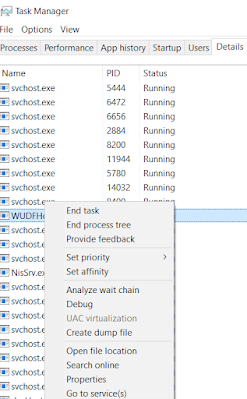Introducing Materialize and Dematerialize Operators in C# Observable
If you've been working with Reactive Extensions (Rx) in C for a while, you’re probably comfortable using operators like `Select`, `Where`, and `Subscribe`. But did you know that two lesser-known but incredibly useful operators give you deeper control over observables? Today, we're going to explore Materialize and Dematerialize. Don’t worry if they sound a bit scary—by the end of this post, you’ll see how these operators can make your life easy by debugging and handling errors much easier.
Terms like Observable, Observer, and Subject are from the Observer Design Pattern.
So, What Do Materialize and Dematerialize Even Do?
Let’s start with Materialize. Normally, when you’re working
with an observable, it emits data, completes, or throws an error. What
Materialize does is convert all those events (values, errors, completions) into
a `Notification<T>` object. It’s like converting each event into a form that
you can inspect and manipulate.
On the other hand, Dematerialize converts these `Notification<T>`
boxes back into regular observable values, errors, or completions. It’s like
unboxing a present and getting back to the original content.
To put it simply:
- Materialize: Converts observable events into
"notifications" (everything, including errors, becomes an item that
can be tracked).
- Dematerialize: Converts those notifications to their
original form (whether they are values or errors).
Why You Should Care?
At first you might think why we need to take that additional
effort to change the regular data into notifications, right? Why complicate
things? Well, Materialize is super useful when you want keep track of everything
that’s happening in your observable stream—including values, errors and
completions. It allows you to inspect and log events more easily, which can be
a lifesaver when debugging complex issues. And Dematerialize helps you
"undo" the materialization when you're done with inspecting or
modifying the data.
Let’s Try To See Materialize in Action
Suppose you have an observable that emits a couple of values
and then throws an error:
IObservable<int> observable =
Observable.Create<int>(observer =>
{
observer.OnNext(1);
observer.OnNext(2);
observer.OnError(new Exception("Oops, something went
wrong!"));
return
Disposable.Empty;
});
This observable emits `1` and `2`, but then it produces an
error. Normally, your stream would just stop and throw the exception. But what
if you are interested in logging or inspecting every event, including that
error? Here’s where `Materialize` can help:
observable
.Materialize()
.Subscribe(notification =>
{
Console.WriteLine($"Notification: {notification.Kind}");
if
(notification.HasValue)
{
Console.WriteLine($"Value: {notification.Value}");
}
if
(notification.Exception != null)
{
Console.WriteLine($"Error: {notification.Exception.Message}");
}
});
This turns each event (even the error) into a `Notification`
object that we can inspect. Here's what you’d see printed to the console:
Notification: OnNext
Value: 1
Notification: OnNext
Value: 2
Notification: OnError
Error: Oops, something went wrong!
Pretty neat, right? Now you have complete visibility into
what's happening in your observable stream, including the error that caused the
sequence to stop.
Unwrapping Notifications with Dematerialize
Once you’ve materialized the events, you can make changes or
log the notifications as needed. But eventually, you'll want to go back to a
regular observable stream. This is where `Dematerialize` comes into play.
Let’s say you want to modify one of the values and then
return the stream back to its original form:
observable
.Materialize()
.Select(notification =>
{
if
(notification.Kind == NotificationKind.OnNext && notification.Value ==
2)
{
// Change
the second value from 2 to 10
return
Notification.CreateOnNext(10);
}
return
notification;
})
.Dematerialize()
.Subscribe(
value =>
Console.WriteLine($"Value: {value}"),
error =>
Console.WriteLine($"Error: {error.Message}")
);
In this example, we materialize the notifications, modify
the value `2` to `10`, and then dematerialize the sequence back into an
observable. The output will be:
Value: 1
Value: 10
Error: Oops, something went wrong!
You can see how powerful this is—you can catch and modify
values or errors before returning them to the observable stream. And with
`Dematerialize`, everything runs smoothly as if nothing was changed behind the
scenes.
When Should You Use These Operators?
Materialize and Dematerialize are not the tools that you
will be seeing or using every day, but they’re incredibly useful in the
following situations:
1. Debugging: When you want to keep track of everything that
happens in an observable sequence—like tracking errors and
completions—Materialize gives you full control.
2. Error Handling: You can choose to treat the error just like
normal data instead of letting it stop your observable sequence using Materialize.
3. Data Transformation: If you need to transform or swap
values mid-stream (for example, in a retry mechanism), Materialize helps you
take full control of the observable flow.
Concluding
The Materialize and Dematerialize operators in Reactive
Extensions are powerful tools that give you the power to see and manipulate
everything that happens in an observable sequence.
Your life will be a lot easier whether you're debugging,
handling errors, or tweaking values on the fly.
Think about Materialize and Dematerialize next time when you
are stuck with tricky error handling or want more information about your
observables.

Comments
Post a Comment